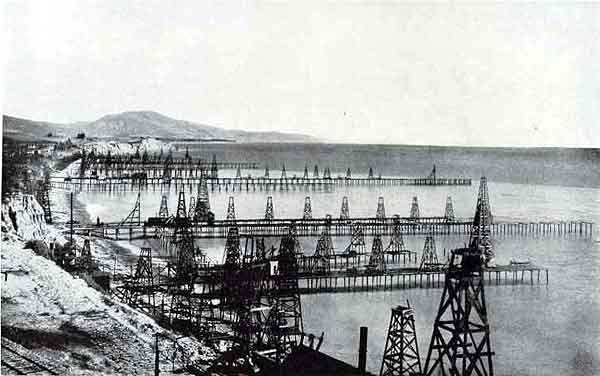by Bruce Wells | Jul 1, 2025 | Offshore History
The U.S. offshore petroleum industry began with drilling and production from platforms constructed on lakes in Ohio and Louisiana and on California oil piers. In Ohio, state geologists reported oil wells drilled on Grand Lake as early as 1891. Dozens of wells on Louisiana’s Caddo Lake also produced oil in 1911.
By 1897, Henry Williams had successfully pursued the giant Summerland, California, oilfield to the scenic cliffside beaches of Santa Barbara.
California Oil Piers
With reports of “tar balls” on the beaches from natural offshore oil seeps, Williams recognized that the highly productive field extended into the Pacific Ocean. He and his associates constructed a 300-foot pier, mounted a cable-tool derrick, and began drilling. (more…)
by Bruce Wells | Jan 22, 2025 | Offshore History
Exploring the 1969 offshore disaster and the geology of ancient natural petroleum seeps.
A 1969 oil spill from a California offshore platform transformed the public’s view of the U.S. petroleum industry and helped launch the modern environmental movement — and the Environmental Protection Agency. Ancient natural seeps continue to produce thousands of tons of oil every day.
On January 28, 1969, after drilling 3,500 feet below the ocean floor, a Union Oil Company drilling platform six miles off Santa Barbara, suffered a blowout. Between 80,000 and 100,000 barrels of oil flowed into the Pacific Ocean and onto beaches, including at Summerland, where the U.S. offshore industry began in 1896 with drilling on oil well piers. (more…)
by Bruce Wells | Nov 6, 2024 | Offshore History
The U.S. offshore drilling for oil began in the late-19th century on lakes and at the ends of Pacific Ocean piers. Until an innovative Kerr-McGee drilling platform in 1947, no offshore drilling company had ever risked drilling beyond the sight of land.

Many of the earliest offshore oil wells were drilled from piers at Summerland in Santa Barbara County, California. Circa 1901 photo by G.H. Eldridge courtesy National Oceanic & Atmospheric Administration.
In 1896, as enterprising businessmen pursued California’s prolific Summerland oilfield all the way to the beach, the lure of offshore production enticed Henry L. Williams and his associates to build a pier 300 feet out into the Pacific — and mount a standard cable-tool rig on it. (more…)


